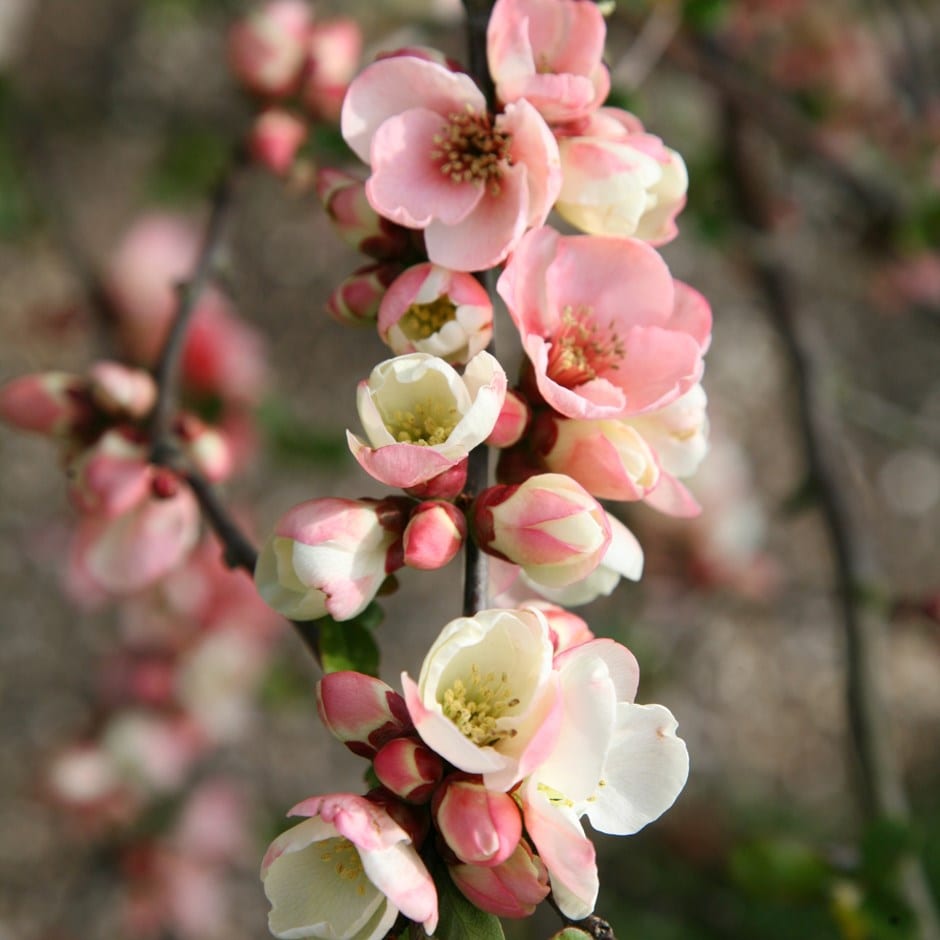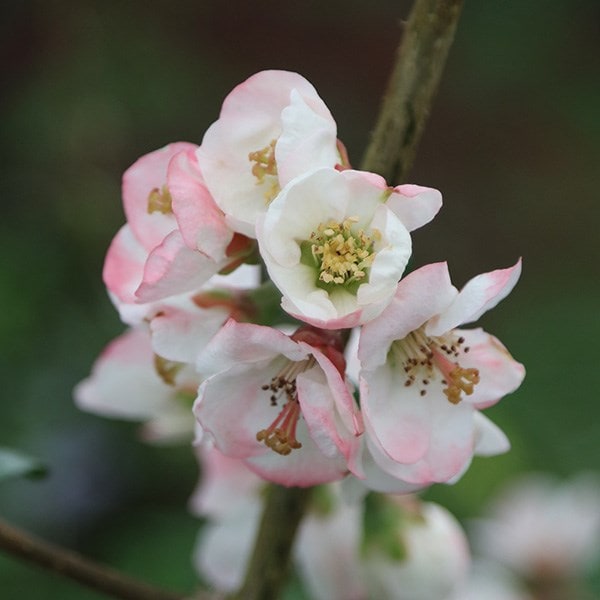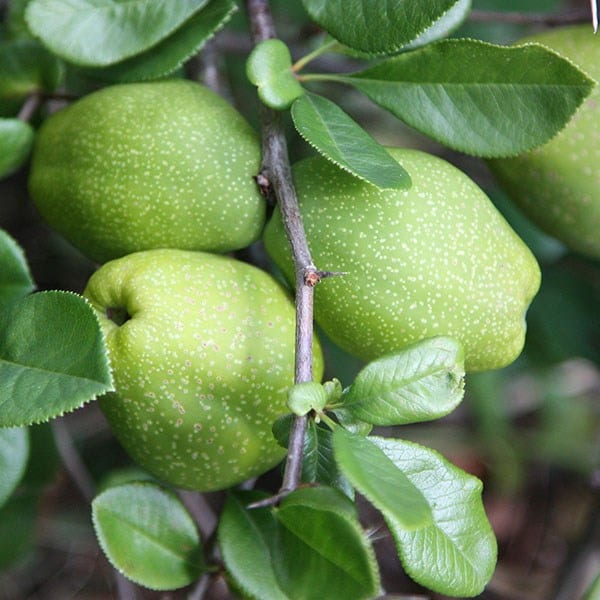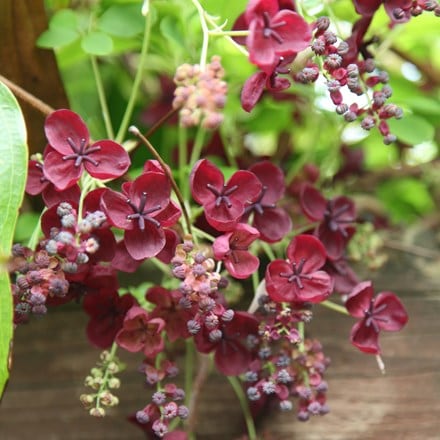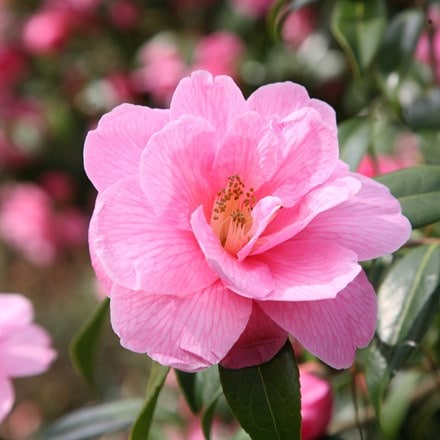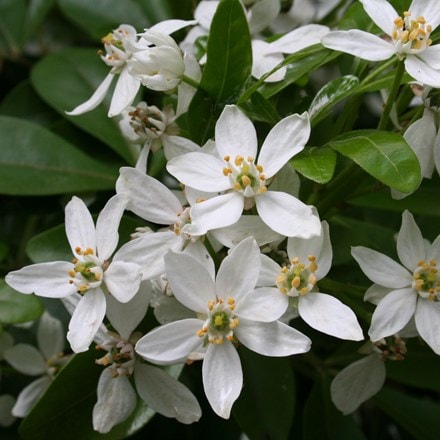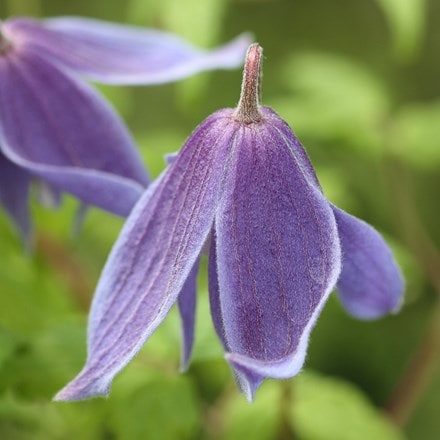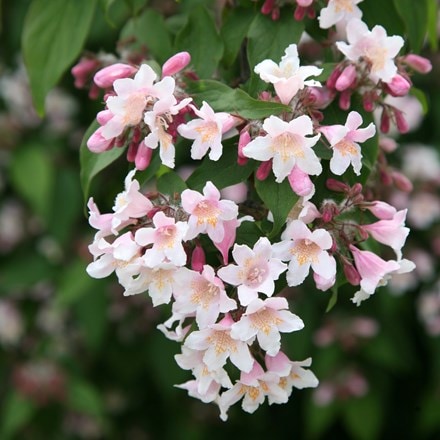Chaenomeles speciosa 'Moerloosei'
flowering quince
- 2 litre pot
- £29.99
- In stock (shipped within 2-3 working days)
- 3 × 2 litre pots
- £67.99 £22.66 each
- In stock (shipped within 2-3 working days)
Delivery options
- Standard £5.99
- Position: full sun or partial shade
- Soil: moderately fertile, well-drained soil
- Rate of growth: fast
- Flowering period: March to May
- Hardiness: fully hardy
Ornamental quinces bring a welcome flush of colour to the garden in spring, when their bare twigs are smothered in flowers before the glossy, dark green leaves appear.
Chaenomeles speciosa 'Moerloosei' is later flowering than other varieties and has cup-shaped, white flowers flushed with dark pink, from March to May followed by aromatic, greenish-yellow fruit. This vigorous, deciduous quince makes an attractive informal hedge for a sunny or partly shady site with moderately fertile, well-drained soil, and looks stunning trained against a wall. The fruit can be eaten when cooked.
Chaenomeles speciosa 'Moerloosei' is later flowering than other varieties and has cup-shaped, white flowers flushed with dark pink, from March to May followed by aromatic, greenish-yellow fruit. This vigorous, deciduous quince makes an attractive informal hedge for a sunny or partly shady site with moderately fertile, well-drained soil, and looks stunning trained against a wall. The fruit can be eaten when cooked.
Flowering quince is a tough, reliable shrub that works well trained on walls or used in mixed borders. Plant in well-drained soil in sun or partial shade—it copes with most soil types.
After flowering, shorten side shoots to five or six leaves to shape the plant and encourage flowering and fruiting. Remove any crossing or misplaced stems to keep growth open and healthy.
Once the plant is established, reduce excess growth in late spring or summer, and cut back side shoots again to two or three leaves for a neat finish. Apply a mulch in spring to help retain moisture and suppress weeds.
After flowering, shorten side shoots to five or six leaves to shape the plant and encourage flowering and fruiting. Remove any crossing or misplaced stems to keep growth open and healthy.
Once the plant is established, reduce excess growth in late spring or summer, and cut back side shoots again to two or three leaves for a neat finish. Apply a mulch in spring to help retain moisture and suppress weeds.
